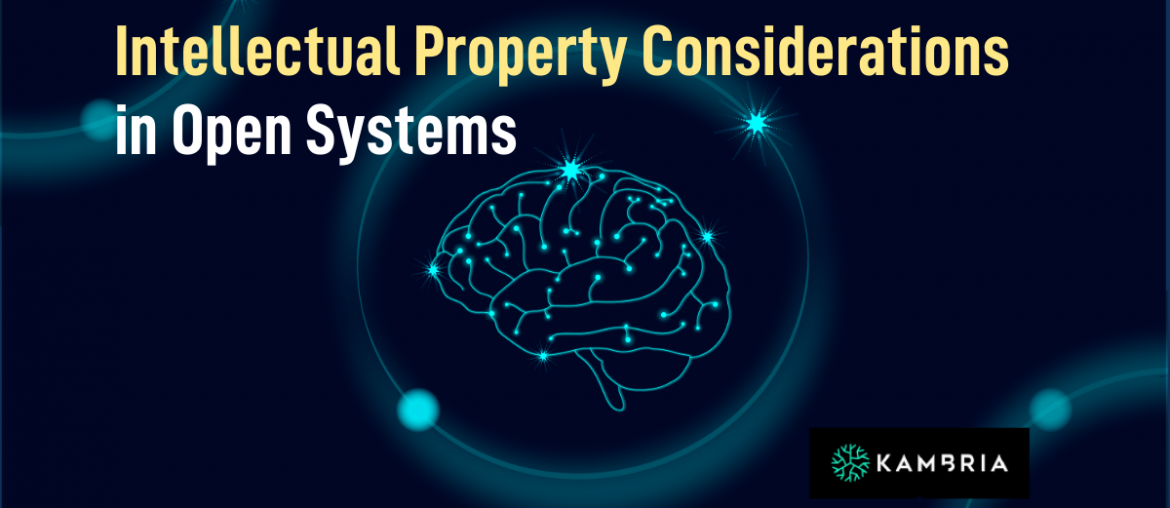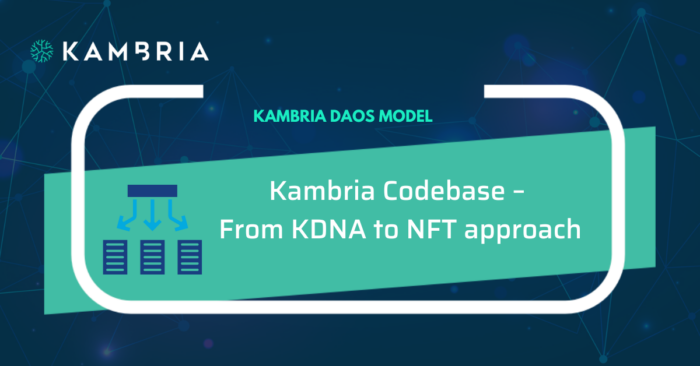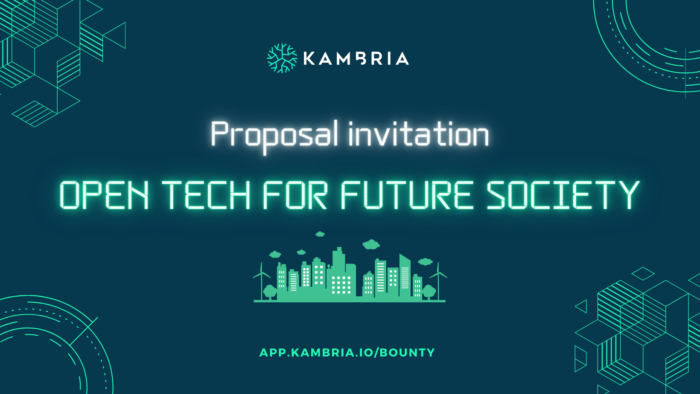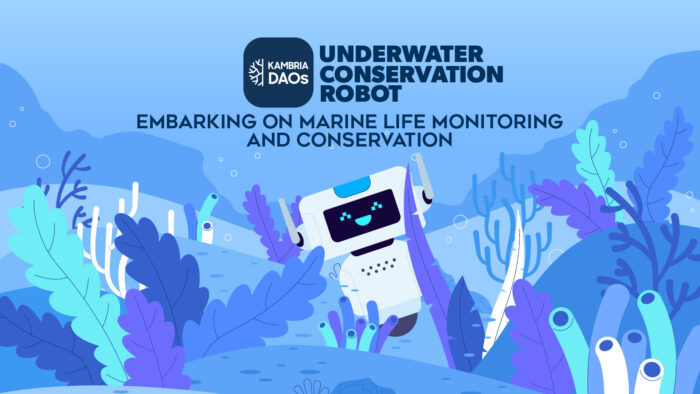
Have you heard of The Fourth Industrial Revolution? We like to refer to this new era a lot here at Kambria because it nicely incorporates the challenges and goals we’re seeing regarding the pace and form of innovation. If the Third Industrial Revolution ushered in the digital age and transformed how we work, live and communicate, then the Fourth goes above and beyond by encouraging -- or rather requiring -- us to create a new techno-economic paradigm based on collaboration.
Let’s face it -- siloed innovation is a thing of the past. Today, getting ahead requires harnessing inputs from various experts and stakeholders in order to create highly-capable products and services quickly for global scale and maximum impact. That is the promise of open innovation. With increasing fervor, companies are changing the way they approach innovation and modifying the way ideas flow into and out of an organization. They are promoting and engaging in collaborative activity because they understand that closed systems are limited. Today, innovation from the outside and can help organizations reach their goals faster, better and at a lower cost. Open innovation can help cut through the complexity of advanced technology.
All of this sounds great, yes. But what are the risks and challenges? At the top of the list is intellectual property protection. And a close second is IP monetization. Sure, open systems are great but how do you protect what you have developed and how can you ensure you’ll make money from it in order to support your future endeavors? Let’s analyze these issues separately and get an overview of the current landscape starting with the promise of open systems.
The Promise of Open Systems
Want to create better products faster while reducing R&D costs? That is the promise of open systems. With increased collaboration come efficiencies that many standalone R&D labs and startups cannot afford or sustain. “[T]he central idea behind open innovation is that, in a world of widely distributed knowledge, companies cannot afford to rely entirely on their own research, but should instead buy or license processes or inventions...from other companies,” states Wikipedia. “[I]nternal inventions not being used in a firm's business should be taken outside the company,” which is referred to as outbound open innovation.
In addition, open source software can provide more value to the company when it includes open source components. Due to the constant updating by community members that open source provides, adoption of open source systems may be faster than closed systems. The trade-off is between companies retaining full control versus being able to leverage resources beyond their own limited capabilities.
Open Source Models and License Types
There are so many terms related to open source. What do they all mean?
Freeware -- software that is offered by the owner at no cost to the end user. Yes, it’s absolutely free to use. Examples include Adobe Reader, OpenOffice and Skype.
Public domain -- often used interchangeably with “open source” but it’s not the same thing. Software in the public domain does not typically allow users to modify the source code like open source software does.
Shareware -- similar to freeware in that the right to modify the source code is not typically included. But unlike freeware, shareware is typically not offered for free and requires an up-front cost. “Freemium” services that offer basic functionality for free and then charge for additional features are a good example of shareware.
Although there are many types of open source licenses, a few are most commonly used: the BSD licenses, the Apache license, and the GNU licenses.
- BSD 3-Clause "New" or "Revised" license
- Apache License 2.0
- GNU General Public License (GPL)
- GNU Library or "Lesser" General Public License (LGPL)
The BSD 3-clause license contains three terms that govern the redistribution of code:
- The copyright notice, condition list, and disclaimer must all be retained during software redistribution.
- Binary redistributions must also include other materials provided with the original distribution.
- The names of contributors and copyright holder cannot be used to promote products derived from the original software without specific permission.
The Apache License Version 2.0 provides similar freedom of use and terms; however, it provides more specific information about the associated legal terms.
Free Software Foundation’s General Public License (“GPL”) and Lesser General Public License (“LGPL”) permit “modification and distribution of free derivatives, but which preclude the creation of proprietary derivatives.” The Linux operating system, for example, is an example of an open source derivative of UNIX, and a number of popular software development tools such as the GNU C compiler are also distributed under the GPL.
Of course, individual communities can have their own “community source” license, which will include terms based on how the community uses the technology. While a university’s license may be highly permissive, a private company like Sun Microsystems would want to make its Java® platform license highly restrictive. To learn more about open source licenses and their distinctions, visit https://opensource.org/licenses.
Monetizing Open Source
Now that you know a bit more about open source licenses, do you think the trade-off is worth the risk? It depends on the organization’s business model and how it plans to monetize its open system or components. To be sure, open source does not mean “free of charge.” There is money to be made in open source — just look at Red Hat, an open source company, which IBM will acquire for $34 billion; if all goes as planned, the acquisition is expected to close in the latter half of 2019.
While many open source products are free, “free of charge” is not part of the definition of open source. It all depends on who retains ownership, what right(s) are granted, and how open components can be used. Often one part of the source code will be made public, and another part is kept private requiring payment to use the software with full functionality.
Using another business model, many open source companies like Oracle generate revenue by providing training and support for their open source programs. Lastly, some companies provide source code for free for personal use and charge for commercial use.
Is Open Source Right for Your Business?
So how do you determine which components of your product or service to open source? First, determine what intellectual property you need to protect. Then develop a system to ensure that the most important elements of that IP remain under your ownership and control. Last, consider whether the company’s long-term goals would be better-served by protecting its IP through patents or trade secrets.
“For some strategic products we take a hybrid approach,” says Gideon Myles, Lead Counsel for Patents & Open Source at Dropbox. “We recognize the value in open sourcing the code and in preserving some IP rights so we simultaneously open source an implementation and file for a patent, scoping the patent and the license terms so the open source community can use the software without making the patent worthless to us. Licenses like the Apache 2.0 license are one way to ensure this layered protection; licensees can use your code for the particular implementation you have open-sourced, without necessarily obtaining a license to a broader idea in the patent for other uses.”
How will Kambria manage IP?
Kambria intends to use the “community license” model mentioned above in order to capture the unique aspects of our open source platform. One case where Kambria is already employing licensing terms is with respect to our corporate hackathons. In those events, participants must abide by the terms of any licenses associated with third-party technology that is integrated into platform submissions. In addition, participants must comply with all license terms associated with proprietary software, APIs, and/or other copyrighted material they receive access to through the platform.
As a condition of entry, participants grant the Sponsor and Partner of the hackathon a perpetual, irrevocable, worldwide, royalty-free, and non-exclusive license to use, publicly perform, publicly display, or publish any submission in whole or in part that is submitted to the event, for any purpose, including the purpose of allowing the Sponsor and Partner to test and evaluate the entry, to administer the technical and other requirements of the event, and for Prize award, verification and fulfillment. As our platform progresses, so will the licensing terms that apply to each service and/or sector. Kambria will develop them with the best interests of the platform and community in mind.
Summary
All in all, coming together to develop commercially-viable products is surely better than working independently on individual components and that little individual value. Because robotics development requires many specialized software and hardware components, bringing development together in an open source model can create a host of uses and commercial applications never before possible.
How can your organization accelerate tech development and adoption in a comprehensive way? Partner with Kambria’s open innovation ecosystem including resources for technology research, development, funding, and education to build your next-generation solutions.
Open Call for Writers
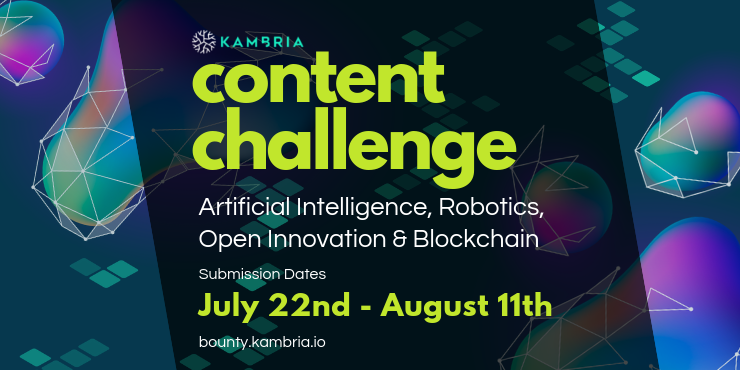
Do you like writing about tech topics like this one? Then join the Kambria Content Challenge and share your insight and expertise with our growing developer community. You could receive over $200 for the best submission. For complete details about our Content Challenge, click here.
